Introduction
Located in the province of Ilocos Sur, Vigan is a remarkable city that preserves the rich history of the Philippines. Recognized as a UNESCO World Heritage Site, it is renowned for its well-preserved Spanish colonial architecture, charming cobblestone streets, and traditional horse-drawn carriages (kalesa) that offer visitors a nostalgic glimpse into the past.
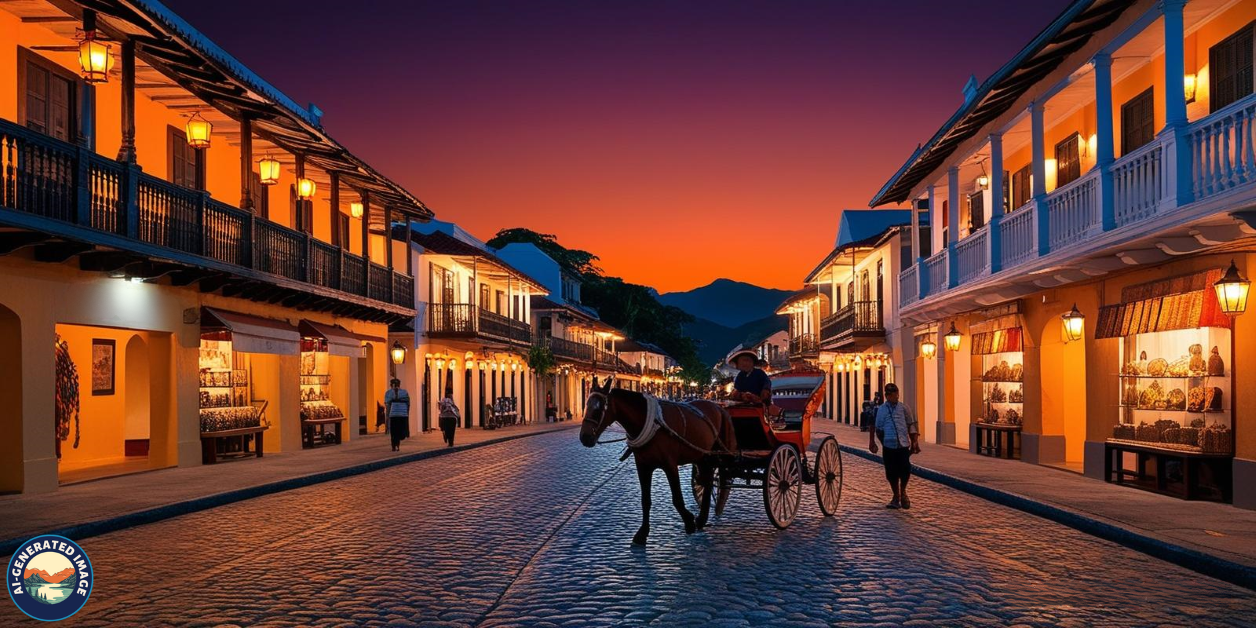
Visiting Vigan is like stepping into a living museum, where historical structures and cultural traditions blend seamlessly. Whether you’re a history buff, a cultural enthusiast, or a food lover, this city has something unique to offer. This guide will take you through Vigan’s fascinating history, iconic attractions, cultural heritage, culinary delights, and essential travel tips to help you plan the perfect trip.
History
Spanish Colonial Influence
Vigan’s roots trace back to the 16th century when Spanish conquistador Juan de Salcedo established it as a colonial settlement. Due to its strategic coastal location, it quickly became a vital hub for trade between China, Mexico, and Europe.
During the Spanish period, Vigan flourished as a center for commerce and governance, with European-inspired architecture shaping its urban design. Unlike other cities that modernized over time, Vigan has maintained its historic street patterns and traditional buildings.
UNESCO World Heritage Status
In 1999, UNESCO designated Vigan as a World Heritage Site for its well-preserved colonial structures that embody a mix of Spanish, Chinese, and Filipino influences. The city’s dedication to preserving its heritage has made it one of Southeast Asia’s most historically significant destinations.
Top Attractions
1. Calle Crisologo – A Glimpse into the Past
One of Vigan’s most famous landmarks, Calle Crisologo, is a historic street filled with ancestral houses, souvenir shops, and cobblestone paths.
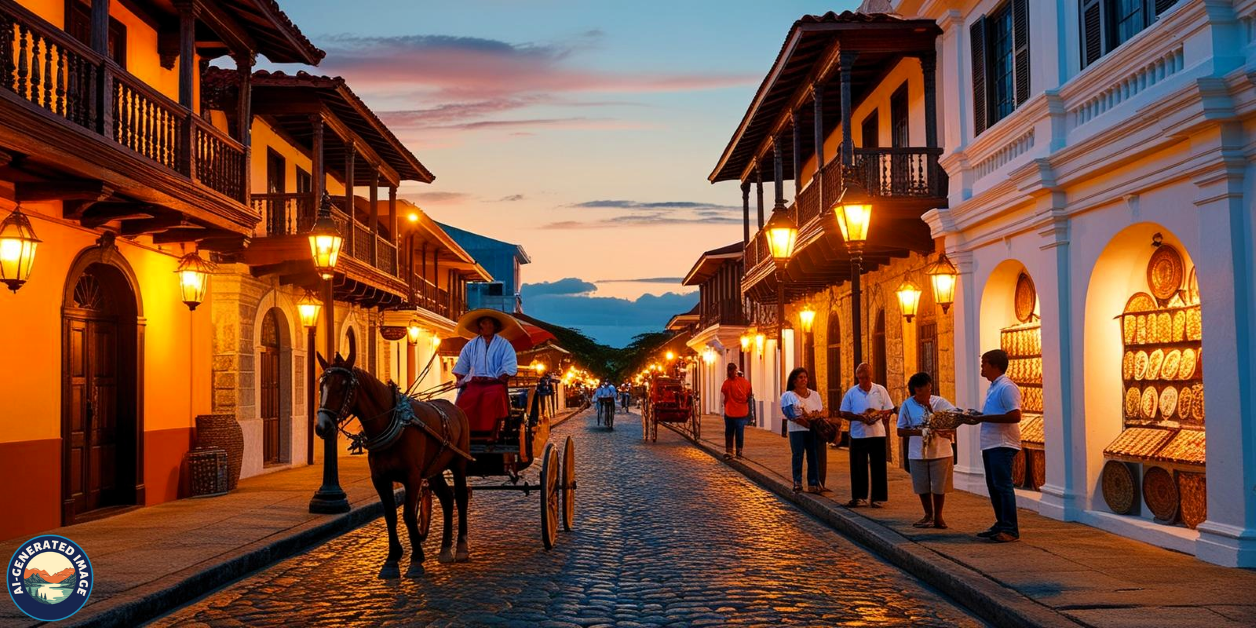
-
What to Experience:
- Walk through the well-preserved Spanish-era mansions.
- Enjoy a kalesa ride for a unique sightseeing experience.
- Browse through shops offering local handicrafts, woven textiles, and wood carvings.
-
Best time to visit:
Early morning or evening for a tranquil atmosphere.
2. Bantay Church and Bell Tower
A few minutes from Vigan’s city center, the Bantay Bell Tower provides a scenic view of the city and surrounding landscapes.
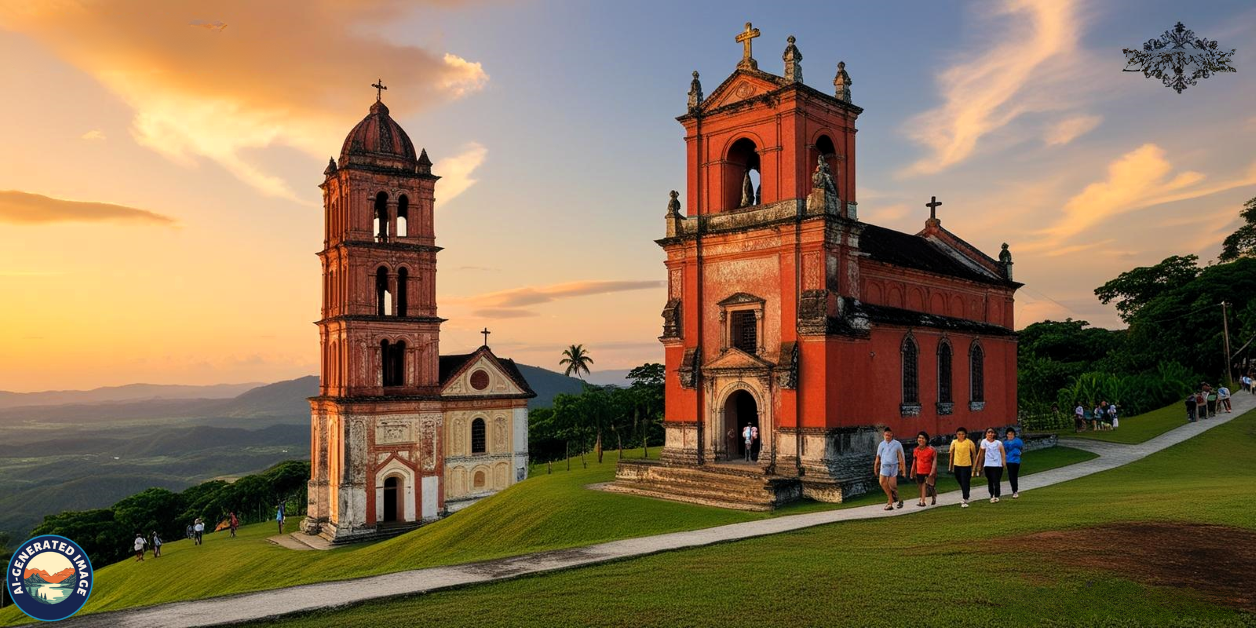
-
Historical Importance:
Built in 1591, it once functioned as a watchtower to guard against potential invasions.
-
Must-Do Activities:
- Climb to the top for breathtaking panoramic views.
- Appreciate the Neo-Gothic and Romanesque architecture of the Bantay Church.
3. Syquia Mansion Museum
The Syquia Mansion was once the home of President Elpidio Quirino, offering an insightful look into the lifestyle of prominent families during the colonial period.
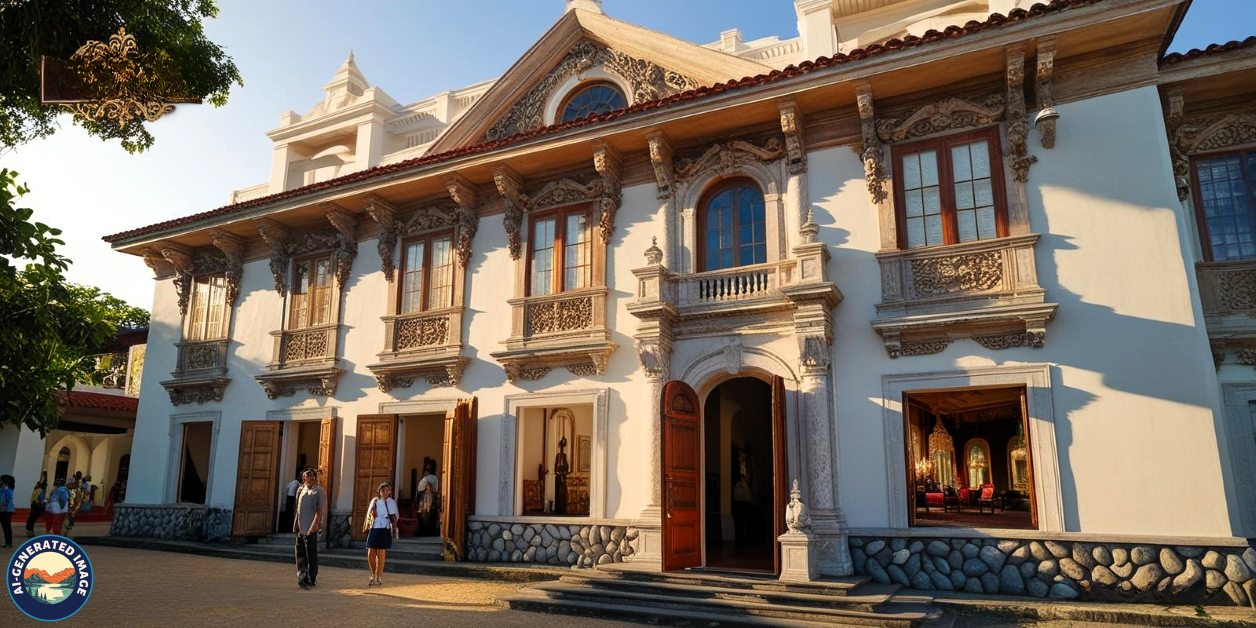
-
Highlights:
- Admire antique furniture, historical photographs, and elaborate artworks.
- Learn about the role of Vigan’s elite in shaping Philippine history.
4. Crisologo Museum
This museum, dedicated to the influential Crisologo political family, showcases various historical artifacts related to Vigan’s political and social evolution.
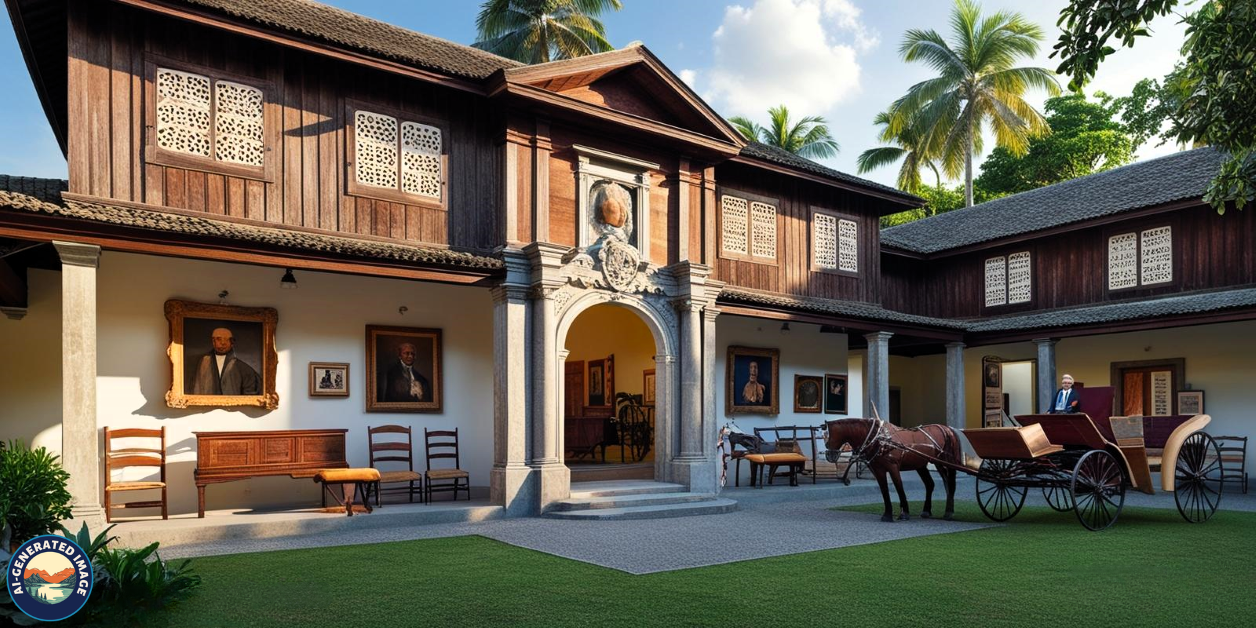
-
Key Exhibits:
- Personal memorabilia of the Crisologo family.
- Display of the bullet-ridden car used during the assassination attempt on Floro Crisologo.
5. St. Paul Metropolitan Cathedral (Vigan Cathedral)
Originally built in 1641, the Vigan Cathedral is a religious and historical landmark.
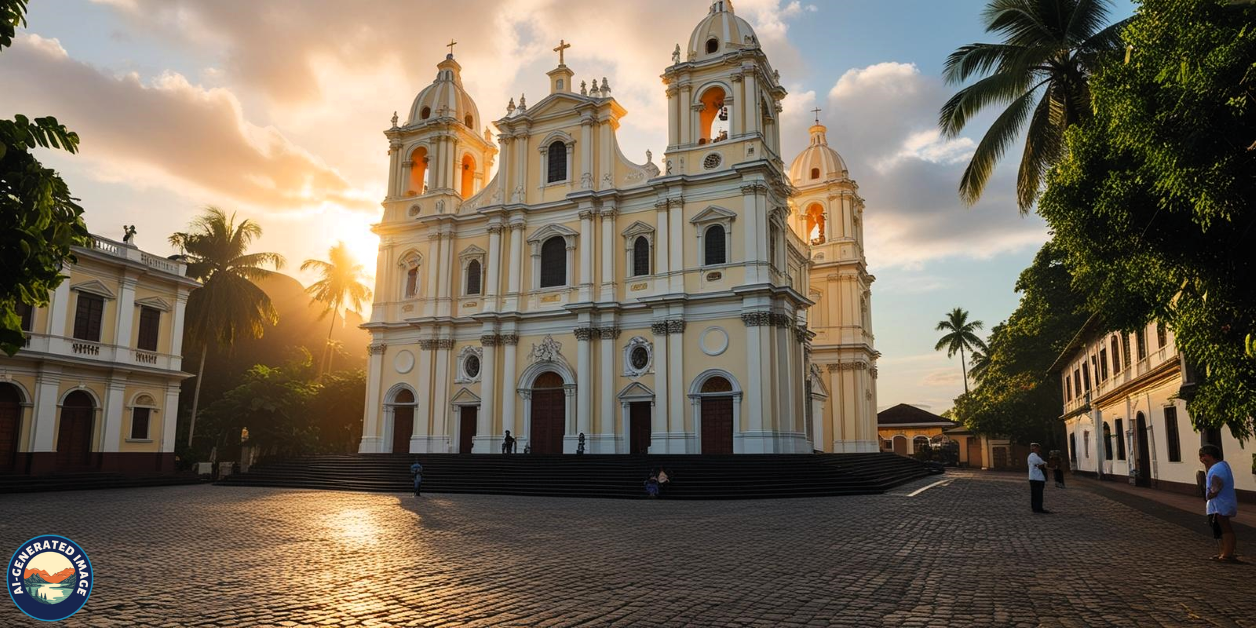
-
Why Visit?
- Admire its Baroque-inspired architecture with Ilocano influences.
- A peaceful site for prayer and reflection.
6. Baluarte Zoo
Owned by former governor Chavit Singson, Baluarte Zoo is a family-friendly destination showcasing a variety of animals.
-
Attractions:
- Get up close with tigers, deer, and exotic birds.
- Visit the Safari Gallery featuring preserved wildlife specimens.
7. Hidden Garden and Café
A lush oasis within the city, Hidden Garden is a perfect spot to relax and enjoy local cuisine.
-
Why Visit?
- Enjoy a tranquil garden ambiance.
- Try authentic Ilocano dishes at the in-house café.
Culture and Traditions
1. Abel Iloco Weaving
Vigan is known for its handwoven Abel Iloco textiles, crafted using traditional weaving techniques that have been passed down for generations.
2. Pottery at Pagburnayan Jar Factory
Watch skilled artisans create traditional earthenware pots, a craft that has been part of Vigan’s heritage for centuries.
3. Local Festivals
-
Viva Vigan Binatbatan Festival of the Arts (May) –
- A lively event celebrating Vigan’s heritage through dance and street performances.
-
Longganisa Festival (January) –
- A gastronomic festival featuring Vigan’s famous garlicky longganisa sausages.
Local Dishes
1. Vigan Empanada –
A crispy, rice-flour pastry filled with longganisa, egg, and shredded vegetables.
2. Bagnet –
Deep-fried crispy pork belly, best enjoyed with local vinegar.
3. Vigan Longganisa –
Small, garlicky sausages with a unique, robust flavor.
4. Sinanglao –
A sour beef soup, a staple in Ilocano cuisine.
5. Royal Bibingka –
A chewy, sweet rice cake, popular as a local delicacy.
Best Time to Visit
-
November to May:
Dry season is best for exploring outdoor attractions.
-
Festival season:
January and May offer the most vibrant cultural experiences.
How to Reach
-
By Bus:
Direct buses from Manila (7-8 hours travel time).
-
By Air:
Fly to Laoag International Airport, then take a bus to Vigan (2-hour ride).
Where to Stay
-
Luxury:
Hotel Luna – A heritage hotel featuring an art gallery.
-
Mid-range:
Ciudad Fernandina Hotel – A comfortable stay with colonial-style decor.
-
Budget:
Casa Teofila Lodge – An affordable yet charming accommodation.
Travel Tips
- Wear comfortable walking shoes for exploring cobblestone streets.
- Experience a kalesa ride for an authentic tour.
- Be respectful of local customs and heritage sites.
Conclusion
Vigan is a priceless cultural gem that allows travelers to step back in time and experience the charm of the Spanish-era Philippines. From walking down Calle Crisologo to indulging in local delicacies, Vigan offers an unforgettable travel experience. Plan your visit today and immerse yourself in this historical wonder!
FAQs
1. Why is Vigan famous?
Vigan is celebrated for its colonial-era architecture, cobblestone streets, and rich cultural heritage.
2. How long should I stay?
A 2-3 day trip is perfect to explore the main attractions and enjoy local food.
3. What’s the best way to get around Vigan?
By walking, taking a kalesa ride, or visiting attractions via tricycle.
4. What souvenirs should I buy?
Handwoven Abel Iloco fabrics, pottery, and Vigan longganisa make great souvenirs.
5. Is it safe for tourists?
Yes, Vigan is known for being a safe and welcoming city for travelers.
